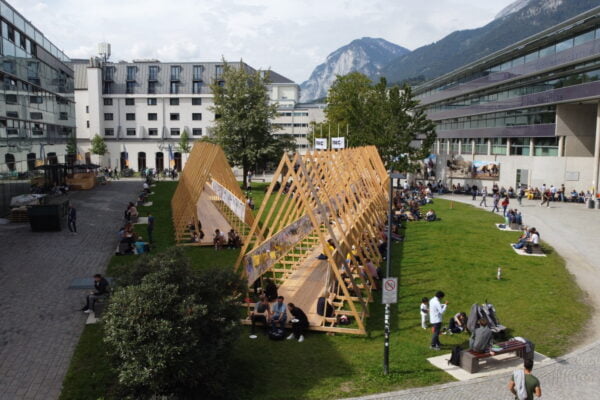
NAME:
SOWI - Garden
BUILDING:
SOWI
FLOOR:
0
TYPE:
Garden
CAPACITY:
2000
ACCESS:
Public Access
EQUIPMENT:
---
Mass movements represent a significant hazard in the high-mountain regions of the Pyrenees, threatening transportation routes, infrastructure, and local communities. Protective forests naturally mitigate the impact of these hazards, and their effectiveness can be further enhanced using nature-based engineering solutions. The READAPT project aims to provide innovative solutions by utilizing wood structures on living trees to dissipate the energy of hydrogeomorphic processes. Here, we present results from this project focused on the analyses of the maximum mechanical resistance of living and dead trees acting as barriers, along with our experience in designing and implementing such barriers on a forested slope prone to rockfalls. To assess the ecosystem service (in terms of resistance) of protective forest, we conducted extensive pulling tests on two common Pyrenean tree species, Abies alba Mill. and Fagus sylvatica L., growing under different geomorphic and ecological conditions. We then performed dynamic and static impact tests on deadwood from the same species using a custom-built, full-scale steel battering ram. Finally, we developed and implemented various wood-based barrier designs on a forested slope to reduce the onset and/or propagation probabilities of geomorphic processes. Our analyses not only provide fundamental insights into how forests resist natural hazards but also offer key information on the resistance of wood structures. This knowledge is crucial for the further development of nature-based solutions (NBS) in mountain regions.

We and use cookies and other tracking technologies to improve your experience on our website. We may store and/or access information on a device and process personal data, such as your IP address and browsing data, for personalised advertising and content, advertising and content measurement, audience research and services development. Additionally, we may utilize precise geolocation data and identification through device scanning.
Please note that your consent will be valid across all our subdomains. You can change or withdraw your consent at any time by clicking the “Consent Preferences” button at the bottom of your screen. We respect your choices and are committed to providing you with a transparent and secure browsing experience.